AWS News Blog
Amazon MQ – Managed Message Broker Service for ActiveMQ
Messaging holds the parts of a distributed application together, while also adding resiliency and enabling the implementation of highly scalable architectures. For example, earlier this year, Amazon Simple Queue Service (Amazon SQS) and Amazon Simple Notification Service (Amazon SNS) supported the processing of customer orders on Prime Day, collectively processing 40 billion messages at a rate of 10 million per second, with no customer-visible issues.
SQS and SNS have been used extensively for applications that were born in the cloud. However, many of our larger customers are already making use of open-sourced or commercially-licensed message brokers. Their applications are mission-critical, and so is the messaging that powers them. Our customers describe the setup and on-going maintenance of their messaging infrastructure as “painful” and report that they spend at least 10 staff-hours per week on this chore.
New Amazon MQ
Today we are launching Amazon MQ – a managed message broker service for Apache ActiveMQ that lets you get started in minutes with just three clicks! As you may know, ActiveMQ is a popular open-source message broker that is fast & feature-rich. It offers queues and topics, durable and non-durable subscriptions, push-based and poll-based messaging, and filtering.
As a managed service, Amazon MQ takes care of the administration and maintenance of ActiveMQ. This includes responsibility for broker provisioning, patching, failure detection & recovery for high availability, and message durability. With Amazon MQ, you get direct access to the ActiveMQ console and industry standard APIs and protocols for messaging, including JMS, NMS, AMQP, STOMP, MQTT, and WebSocket. This allows you to move from any message broker that uses these standards to Amazon MQ–along with the supported applications–without rewriting code.
You can create a single-instance Amazon MQ broker for development and testing, or an active/standby pair that spans AZs, with quick, automatic failover. Either way, you get data replication across AZs and a pay-as-you-go model for the broker instance and message storage.
Amazon MQ is a full-fledged part of the AWS family, including the use of AWS Identity and Access Management (IAM) for authentication and authorization to use the service API. You can use Amazon CloudWatch metrics to keep a watchful eye metrics such as queue depth and initiate Auto Scaling of your consumer fleet as needed.
Launching an Amazon MQ Broker
To get started, I open up the Amazon MQ Console, select the desired AWS Region, enter a name for my broker, and click on Next step:
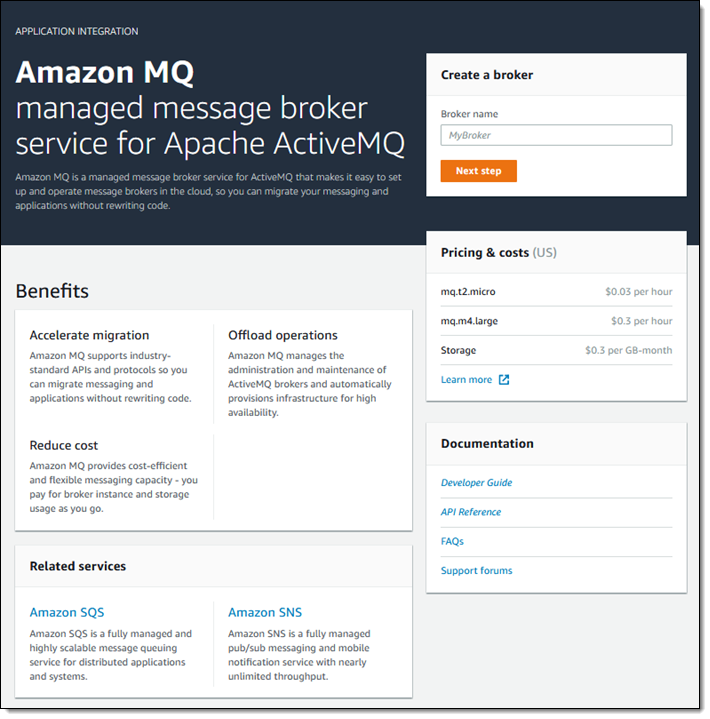
Then I choose the instance type, indicate that I want to create a standby , and click on Create broker (I can select a VPC and fine-tune other settings in the Advanced settings section):
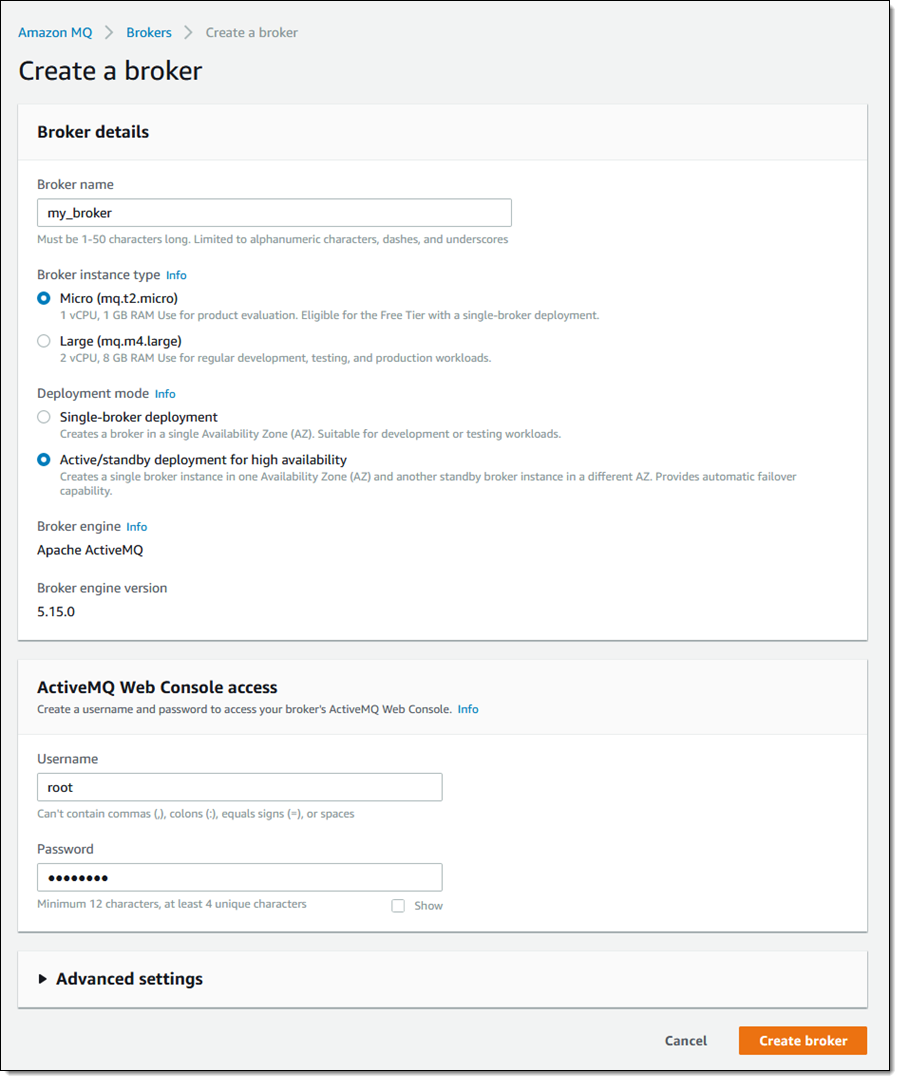
My broker will be created and ready to use in 5-10 minutes:

The URLs and endpoints that I use to access my broker are all available at a click:
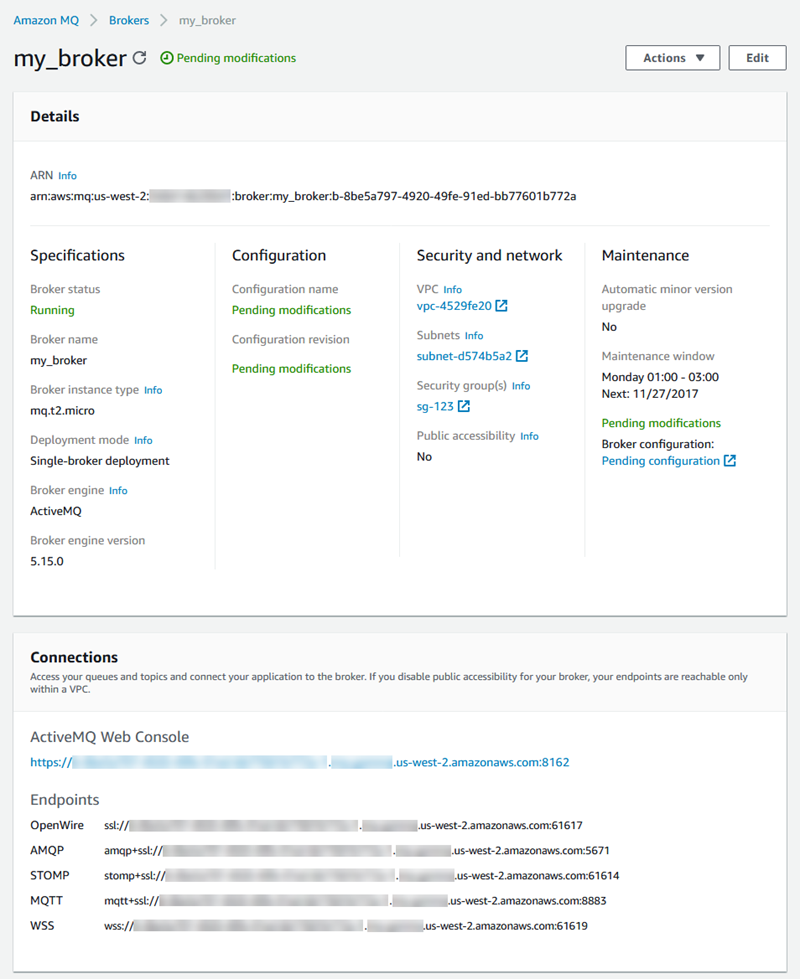
I can access the ActiveMQ Web Console at the link provided:
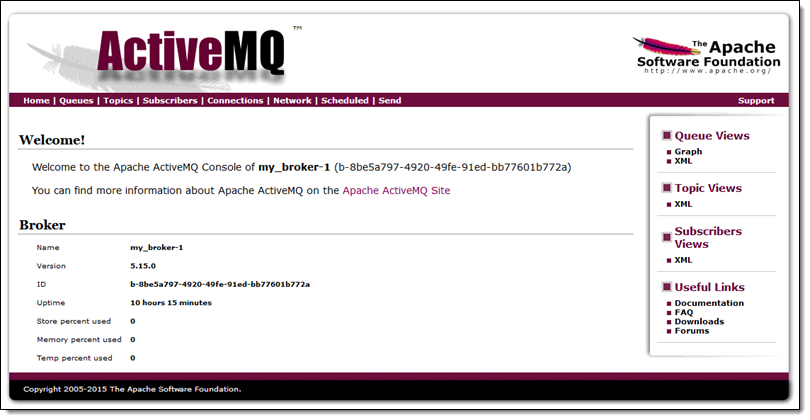
The broker publishes instance, topic, and queue metrics to CloudWatch. Here are the instance metrics:
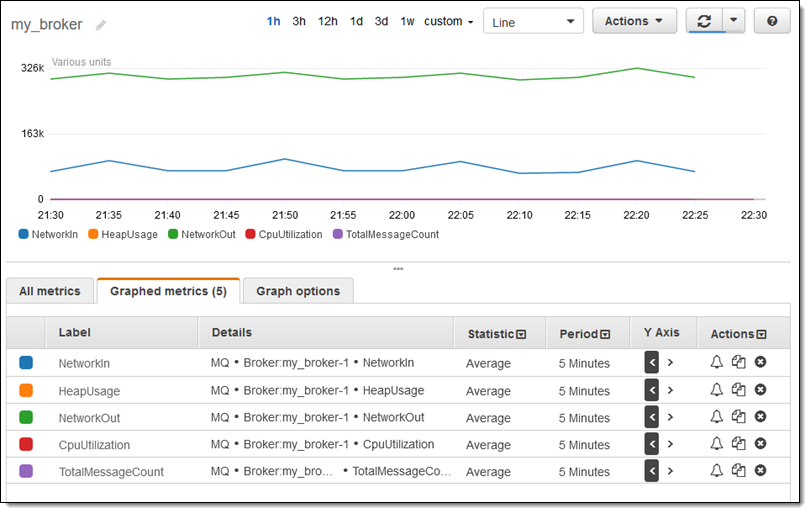
To learn more, read the Amazon MQ Developer Guide.
Available Now
Amazon MQ is available now and you can start using it today in the US East (N. Virginia), US East (Ohio), US West (Oregon), Europe (Ireland), Europe (Frankfurt), and Asia Pacific (Sydney) Regions.
The AWS Free Tier lets you use a single-AZ micro instance for up to 750 hours and to store up to 1 gigabyte each month, for one year. After that, billing is based on instance-hours and message storage, plus charges Internet data transfer if the broker is accessed from outside of AWS.
— Jeff;